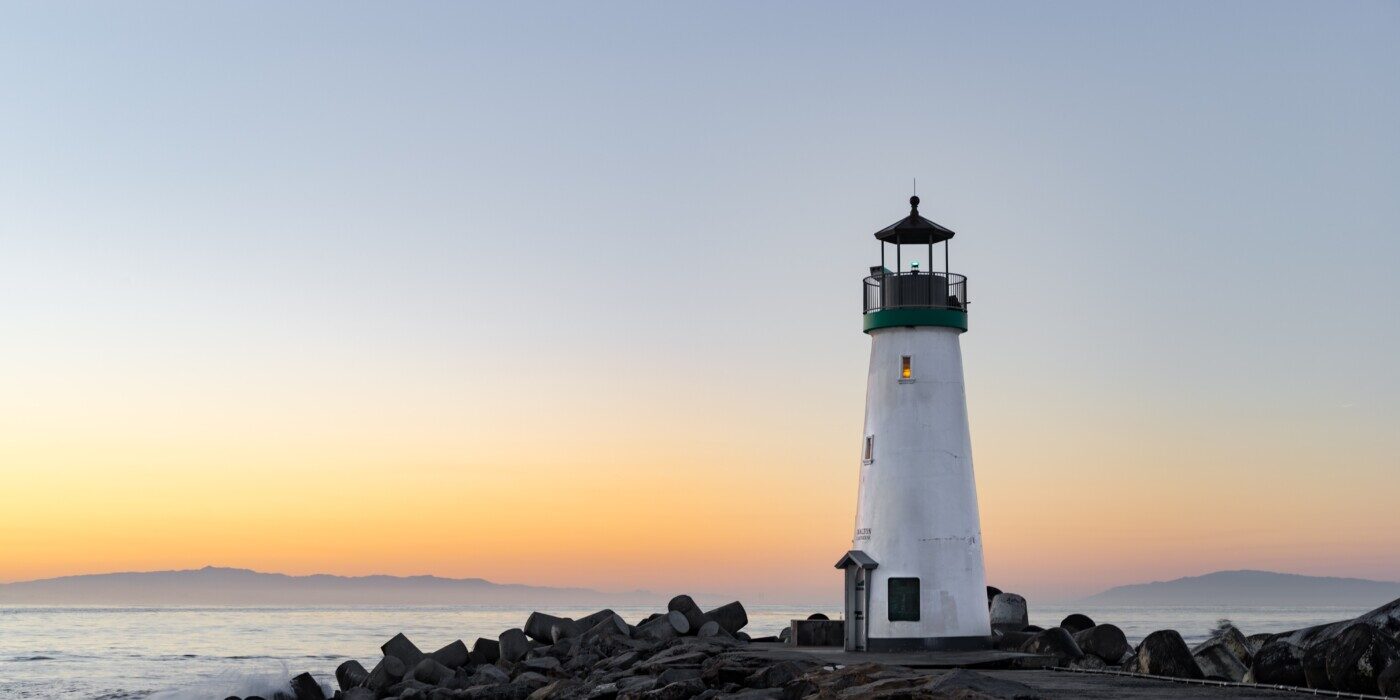Time Travel – the history of lighthouses
As travel has evolved through time, so has the infrastructure designed to support travel – and this is certainly true of the lighthouse. Their story is a grand one, from one of the great wonders of the world to a state of near-disuse – so what happened to the lighthouse?
The purpose of the lighthouse is to provide light to ships, functioning as beacons and ensuring safety at sea, and this was a job first fulfilled by fires on beaches. Later, these fires would be placed on hilltops, as raising the fire improved the visibility, and if ships were travelling in the day, piles of rocks would function as the markers – these two designs, when combined, would be the basis for the lighthouse. In antiquity, though, the lighthouse functioned more as entrance marker to ports – it wouldn’t function as a warning signal until many years later.
The first known lighthouse was the Pharos of Alexandria in Egypt, which was constructed by Ptolemy I and his son Ptolemy II between 300 and 280 BC
The first known lighthouse was the Pharos of Alexandria in Egypt, which was constructed by Ptolemy I and his son Ptolemy II between 300 and 280 BC. It stood at 330 feet high, and it was one of the tallest manmade structures in the world for many centuries. One of the Seven Wonders of the Ancient World, it took twelve years to complete – it was built mostly with solid blocks of limestone and granite, and the light was produced by a furnace at the top. However, the building was damaged by a number of earthquakes and invaders, and completely destroyed by 1300.
More lighthouses would follow – the oldest existing lighthouse in the world, La Coruna in Spain, would be built around 20 BC, while a Roman lighthouse on the White Cliffs of Dover was constructed around 40 AD. These Roman lighthouses gradually fell into disuse in the Middle Ages, but their use returned as navigation improved. A lighthouse was built at Cordouan by Edward the Black Prince, and then another was commissioned 100 years later in 1581 by Henri III. It was completed in 1611, and designed to symbolise French maritime power and prestige. Its upper level was rebuilt around 1780, incorporating an Argand lamp and one of the first parabolic mirrors turned by clockwork. It would also become the first to use the Fresnel lens, in the early 1820s, which revolutionised lighthouses.
There are legends of wreckers pretending to be lighthouses to force ships to crash
Lighthouses were privately owned in Britain, and the right to collect dues was granted by a local authority or crown warrant – however, people abused these licences, making foreign ships afraid to seek refuge on the south coast. A number of ships were lost – most notably, the Dutch merchant ship Vreede in 1800, with 380 lives lost. More lighthouses were established and taken over by the Trinity House maritime charity, and the Lighthouse Act 1836 enabled more reforms which better supported the lighthouse network. There are legends of wreckers pretending to be lighthouses to force ships to crash, but there’s no historical record of such practice actually occurring.
The modern era of lighthouses began around the turn of the 18th century, as transatlantic commerce really began to expand. Lighthouse production was expanded due to advances in structural engineering and lighting equipment, and their function evolved to become a warning about shipping hazards such as rocks. The famous Eddystone lighthouse was known as the site of technical and conceptual advances in lighthouse construction, and more development would follow in the UK and around Europe.
The USA began expanding lighthouse production after it became independent, and they also used lightships – these were employed when the water was too deep to construct a lighthouse or if it was impracticable – for extra relief. The government established a US Light-House Establishment which was in charge of operating the lighthouses, and it was one of the first US government jobs available to women in the 19th century.
Older lighthouses have become sites of historical interest, while others have been converted into things such as luxury hotels and alternative wedding venues
One of the major recent changes is the loss of the lighthouse keeper. They were responsible for maintaining the buildings and operating the lamps, from trimming wicks and replenishing fuel, to winding clockworks. Keepers normally lived on-site, sometimes with their families. However, rather than being permanently based in just one location, it was common for them to be moved to different places throughout their careers. Different keepers would also often live together and share the work. Many structures didn’t have running water or heating, while others were somewhat isolated from the outside world. Technology has led to the loss of this job – automation first started to be introduced in the 1980s and was fully implemented in the 1990s, rendering paid keepers a thing of the past.
You might think that modern navigation technology would render the lighthouse obsolete, but these lights are still considered an important backup in case of tech issues or adverse weather conditions. Older lighthouses have become sites of historical interest, while others have been converted into things such as luxury hotels and alternative wedding venues. Their traditional role may have been largely lost to time, but they still stand tall among our coastlines, looking out to sea.

Comments